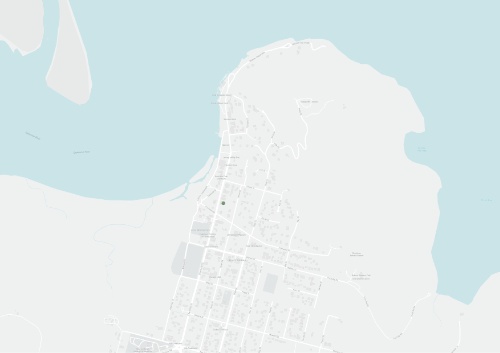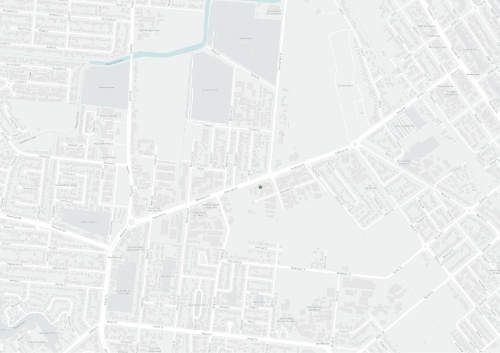Plan Explorer
Filter by:
Region
Topic
Sector
Other
Results
Soil Conservation Act 1986
Current Statutory (law)An Act to consolidate and amend the law relating to the conservation of soil resources and to facilitate the implementation of soil conservation measures by landholders for the mitigation of soil erosion.
Queensland's Agriculture Strategy
Current Government PolicyA 2040 vision to double agricultural production
Strategic Cropping in Cape York
Current InformationalStrategic Cropping in Cape York – what is to be locked away in the draft Strategic Environmental Areas
Western Cape Communities Trust & Western Cape Communities Coordinating Committee strategic plan 2009-2012
Obsolete StrategicThis document was released by the Western Cape Communities Trust (WCCT) and Western Cape Communities Coordinating Committee (WCCCC) as a plan to deliver on 4 key objectives within the mining lease area surrounding Weipa.
South of the Embley communities, heritage and environment management plan
Current OperationalThis community, heritage, and environment management plan was developed by the South of Embley working project group for the area of Rio Tinto Alcan's mining lease between Aurukun and Weipa in mid 2011.
Port of Weipa environmental management plan
Current StrategicThis environmental management plan was released by the North Queensland Bulk Ports Corporation as part of their environmental program with the objective of acting as a reference document for all then-current and potential users of the Weipa port.
Mungumby Community Plan
Current CommunityThis document was released in March of 2012 following a 2007 Federal Court ruling which recognised the Eastern Kuku Yalanji people's of 129,600ha of country between the South Mossman River and just North of Black Mountain near Cooktown.
Wujal Wujal Aboriginal Shire Council planning scheme
Current CommunityThe Wujal Wujal planning scheme was released in 2013 by the Wujal Wujal Aboriginal Shire Council and set out the council's intention for the future of Wujal Wujal over the next 20 years from 2013.
Northern Peninsula Area Council 2010-2020 Land and Environment Management Plan introduction
Current StrategicThis document is the introductory pages for the Northern Peninsula Area Council's 2010-2020 Land and Environment Management Plan released in December 2010.
Draft Cape York Peninsula Natural Resource Management Plan (2005)
Obsolete Government PolicyThe aim of the Plan is to ensure that natural resources are well managed, and protected where required, for the benefit of us all and future generations. The Plan aims as far as possible to be consistent with other regional strategies.
Annan and Endeavour Strategic Plan
Current StrategicThe Annan-Endeavour Catchment Management Group has developed this Strategy in close association with all interested community, government and industry groups.
Cape York Peninsula Heritage Act 2007
Current Statutory (law)An Act to provide for the identification of the significant natural and cultural values of Cape York Peninsula, and cooperative and ecologically sustainable management of Cape York Peninsula.
Coastal Management Plan
Current Government PolicyThe Coastal Management Plan is prepared under the Coastal Protection and Management Act 1995 (Coastal Act) to describe how the coastal zone of Queensland is to be managed.
Cape York Regional Plan
Current Government PolicyPublished by the Department of State Development, Infrastructure and Planning. The plan identifies and interprets the state’s interests in land use planning and development, as described in the State Planning Policy, for the Cape York region.
Kaanju Homelands Wenlock & Pascoe Rivers Cape York Peninsula Indigenous Protected Area Management Plan
Obsolete OperationalPrimarily, this Plan is for Kaanju people living on homelands, but it also serves as a guide for external land and resource management, conservation, service delivery, economic development and community development organisations and agencies, both government and non-government, engaged with Chuul
Laura Ranger Country Plan and Poster
Current OperationalPoster outlining a set of guiding priniciples on which Laura Rangers will operate on their country.
Laura-Normanby Catchment Management Strategy
Current StrategicThe Laura-Normanby Catchment Area covers a vast and relatively undeveloped area with extensive riverine and wetland systems, one of Queensland's largest conservation areas (Lakefield National Park), numerous sacred aboriginal sites, good cattle country and rich agricultural lands.
Mitchell River Watershed Strategic Plan
Current StrategicThe Mitchell River Watershed Strategic Plan 2013-2016 is an update of the Mitchell River Watershed Management Plan created in 2000.
Reef Water Quality Protection Plan 2013
Current Government PolicyReef Plan is a joint commitment of the Australian and Queensland governments. The plan is a collaborative program of coordinated projects and partnerships designed to improve the quality of water in the Great Barrier Reef.
Upper Mitchell Catchment Rehabilitation Plan
Current StrategicTechnical Report on Rehabilitation Needs
Vegetation Management Act 1999
Current Statutory (law)The purpose of this Act is to regulate the clearing of vegetation in a way that:
Eastern Kuku Yalanji Indigenous Protected Area Management Plan Stage 1
Current OperationalCaring for Kuku Nyungkal Country
Our vision for our bubu (land)1 is to
-
Maintain our Nyungkal culture, belief, customs and law/lore;
Recently added
Cape York Peninsula Land Use Strategy: Land Use Program: Tourism Study of Cape York Peninsula
CYPLUSThis study endeavoured to gather information about the then present tourims industry in the Cape York Pennsula as well as the future outlook and possible issues that may affect the tourism industry in the Peninsula.
Cape York Peninsula Land Use Strategy: Natural Resources Analysis Program: Terrestrial Vertebrate Fauna of Cape York Peninsula
CYPLUSThe primary aim of the Terrestrial Vertebrate Fauna project was to gather information by undertaking field serves in key areas lacking then existing data on vertebrate fauna and make that available for incorporation into the Conservation Assessment in stage 2 of the CYPLUS report.
Cape York Peninsula Land Use Strategy: Land Use Program: Survey of Forest Resources of Cape York Peninsula
CYPLUSAs an aspect of the Land Use Program a study into the forest resources of the Cape York Peninsula was undertaken with the aim of compiling a regional outlook on the economic, environmental, and cultural resources of forests and woodlands in order to establish a baseline of their use in the early
Cape York Peninsula Land Use Strategy: Natural Resources Analysis Program: Wetland Definition and Fauna Assessment of Cape York Peninsula
CYPLUSThe aim of this project was to define the differnt types and respective distribution of those types of wetlands within the Cape York Peninsula CYPLUS study area and attempt to investigate patterns between wetland habitat and faunal occurence.
Cape York Peninsula Land Use Strategy: Natural Resources Analysis Program: Vegetation Survey and Mapping of Cape York Peninsula
CYPLUSThis report summarises information about the structure, floristic composition, and areal extent of the present vegetation on the Cape York Peninsula in 1994.
Cape York Peninsula Land Use Strategy: Land Use Program: Values, Needs and Aspirations Study of Cape York Peninsula
CYPLUSThis study was undertaken between July 1994 and Janurary 1995 as a project within the Land use Program of CYPLUS.
Cape York Peninsula Land Use Strategy: Land Use Program: An Assessment of the Conservation and Natural Heritage Significance of Cape York Peninsula
CYPLUSThis report both details the distribution of particular conservation values across the Cape York Peninsula and also acts as a guide for the 40 GIS layers created during the CYPLUS conservation assessment.
Cape York Peninsula Land Use Strategy: Natural Resources Analysis Program: Fauna Distribution Modelling for Cape York Peninsula
CYPLUSThis project report was published in 1995 as part of the CYPLUS reporting. It's pirpose was to make information of the fauna of the Cape York Peninsula readily available to those who required it or may require it in the future.
Cape York Peninsula Land Use Strategy: Land Use Program: Services and Infrastructure of Cape York Peninsula
CYPLUSThis report which compromises an aspect of the CYPLUS reporting gives an overview of the social structure and inherit obstacles in the way of community growth on the Cape York Peninsula.
Mitchell River Watershed Management Group business plan
Current OperationalThis document was a strategic plan released in late 2012 that intended to guide the Mitchell River Management Group on the priorities of the organisations stakeholders, defining a set of projects and activities for implementation, documenting the areas which funding might come from, and defi

